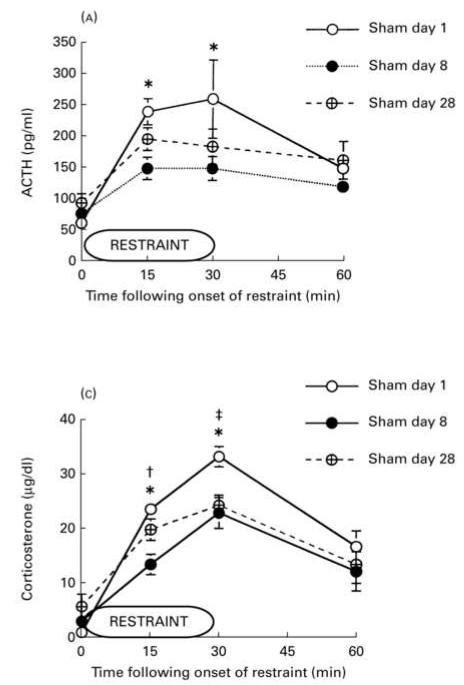Figure 3.
Habituation of HPA activity to repeated restraint does not fully recover after three weeks without restraint. As part of a larger experiment investigating the role of the paraventricular thalamus on the production of habituated responses to HPA activity, the maintenance of habituation in sham-lesioned animals was tested three weeks after the last restraint exposure. Animals were sampled during days 1 and 8 of 8 daily restraints, then were undisturbed from day 9 until day 27. On day 28, all rats were once again restrained and sampled. Overall, animals demonstrated significant habituation by day 8 of restraint as compared to day 1. When animals were re-restrained on day 28, ACTH concentrations during restraint on day 28 were either significantly lower than day 1 responses nor significantly higher than day 8 responses, indicating neither significant habituation nor significant recovery. Corticosterone concentrations during restraint on day 28 were significantly different from day 8 values at 15 minutes and significantly different than day 1 values at 30 minutes. Overall, these results do not demonstrate clear spontaneous recovery of a previously habituated HPA response (Criterion 2). * p ≤ 0.05; day 1 significantly different from day 8. ‡ p ≤ 0.05; day 1 significantly different from day 28. † p ≤ 0.05; day 8 significantly different from day 28. Data are expressed as mean ± SEM. Adapted with permission from Bhatnagar et al., 2002.

